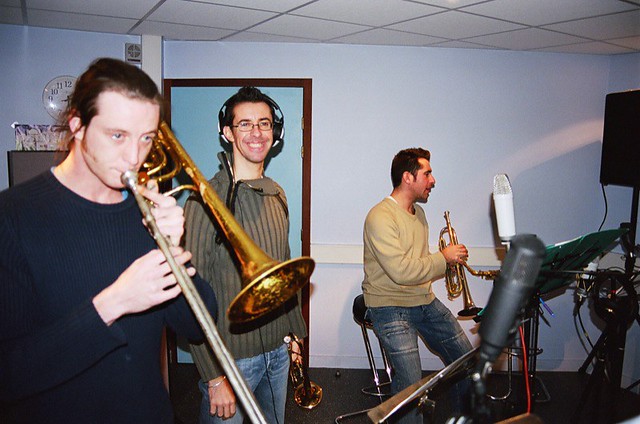 |
The Boy Scouts Marching Band. (Photo credit: Wikipedia)
|
There are numerous and variety of musical instruments played by the members of a marching band. Most commonly played musical instruments in a marching band include brass, woodwind and percussion instruments.
These instruments can be easily carried and simultaneously played by marching band members while marching.
Brass instruments of a marching band include Cornet, Trumpet, Tuba and French horn.
- Cornet is similar to a trumpet which is usually pitched in the B flat. Cornet is a transposing instrument that features valves and it is extensively used in brass bands.
- The trumpet is also a transposing musical instrument that has undergone numerous changes with the passage of time. The trumpet was initially used for the military purposes to declare danger and today it's used band members of Jazz bands.
- Tuba is a deep sound-producing musical instrument and regarded as the largest instrument in brass-wind family.
- The main feature of the French horn is that it produces a unique musical effect with bell point backwards.
Woodwind instruments in a marching band comprise clarinet, flute, oboe and saxophone.
- The Clarinet has undergone numerous innovation and changes since its inception. As a result of unique sound, it is extensively used in band performances.
- The flute is a man-made musical instrument and initially, the flutes were made up of wood.
- Oboe is one of the musical instruments and has only two keys. This instrument is used in orchestras and military band performances.
- The saxophone is available in a variety of types and sizes. Baritone sax, alto sax and tenor sax are the most commonly used saxophone varieties in musical bands.
- Bass drum, cymbals, glockenspiel, timpani and xylophone are the percussion instruments used in a marching band.
- Bass drum is a percussion instrument regarded as the largest members in the drum family.
- Cymbals are shaken, scraped or struck percussion instrument with or without a pitch.
- Glockenspiel is the best example of a tuned musical instrument
- Timpani is a kind of musical instrument that emerged from the kettledrums.
- The xylophone is a variety of percussion instruments that has resonating metal tubes and supported extensively by the frames.
Most of these instruments can be practised by enrolling in your school's music class. Most teachers allow students to practice these instruments during class. Try practising each instrument before choosing which one you will be using full time. It's important to know the ins and outs of each instrument, which will help with your decision. Visit your local music class for more information.
|
















